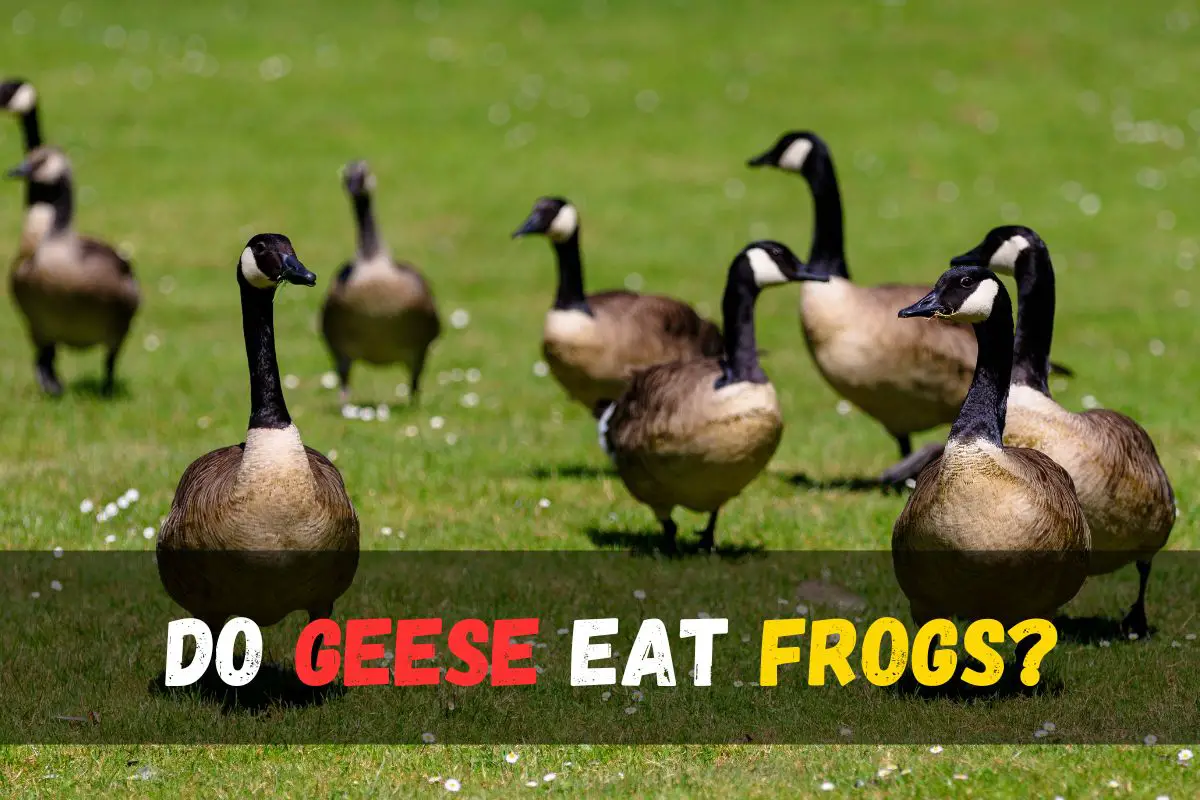Geese, those majestic birds often seen gracefully gliding across lakes or honking in V-shaped formations during migration, have long intrigued researchers and nature enthusiasts alike. One common question that arises is whether geese include frogs in their diet. In this article, we delve into the feeding habits of geese, particularly focusing on their diet throughout the seasons and their water intake preferences.
Do Geese Eat Worms?
Do Geese Eat Frogs?
Geese are primarily herbivores, meaning they predominantly consume plant matter such as grasses, seeds, and grains. However, their diet can vary depending on factors such as habitat, availability of food sources, and nutritional requirements. While geese primarily feed on vegetation, they have been observed occasionally consuming small invertebrates like insects and snails. However, there is limited evidence to suggest that geese actively seek out frogs as a significant part of their diet. Frogs typically inhabit aquatic environments, and geese, while often found near water bodies, tend to feed on the plants growing along the water’s edge rather than hunting for amphibians.
Geese Diet & Seasonal Months
Understanding the dietary patterns of geese throughout the seasons provides valuable insight into their nutritional needs and behavior. During the spring and summer months, when vegetation is lush and abundant, geese primarily graze on grasses, sedges, and aquatic plants. These warmer seasons coincide with the breeding and nesting period for many species of geese, during which females require a diet rich in nutrients to support egg production and the rearing of offspring. As autumn approaches and temperatures begin to drop, geese undergo a period of migration, traveling to warmer regions in search of food and suitable habitat. During migration, geese may supplement their diet with grains and crops such as corn and wheat. In winter, when natural food sources become scarce in colder regions, geese rely heavily on agricultural fields and wetlands where they can find leftover crops and submerged vegetation.
Can Geese eat Apples?
Geese & Water Intake
Water is essential for the survival of geese, not only for drinking but also for maintaining proper hydration and facilitating digestion. Geese are well-adapted to aquatic environments and are often found near lakes, rivers, and marshes. While they may consume water directly from these sources, geese also obtain moisture from the plants they eat, particularly succulent vegetation with high water content. During periods of migration or when natural water sources are scarce, geese may rely on man-made bodies of water such as ponds and reservoirs. However, it’s essential to note that geese can adapt their water intake patterns based on environmental conditions and seasonal changes.
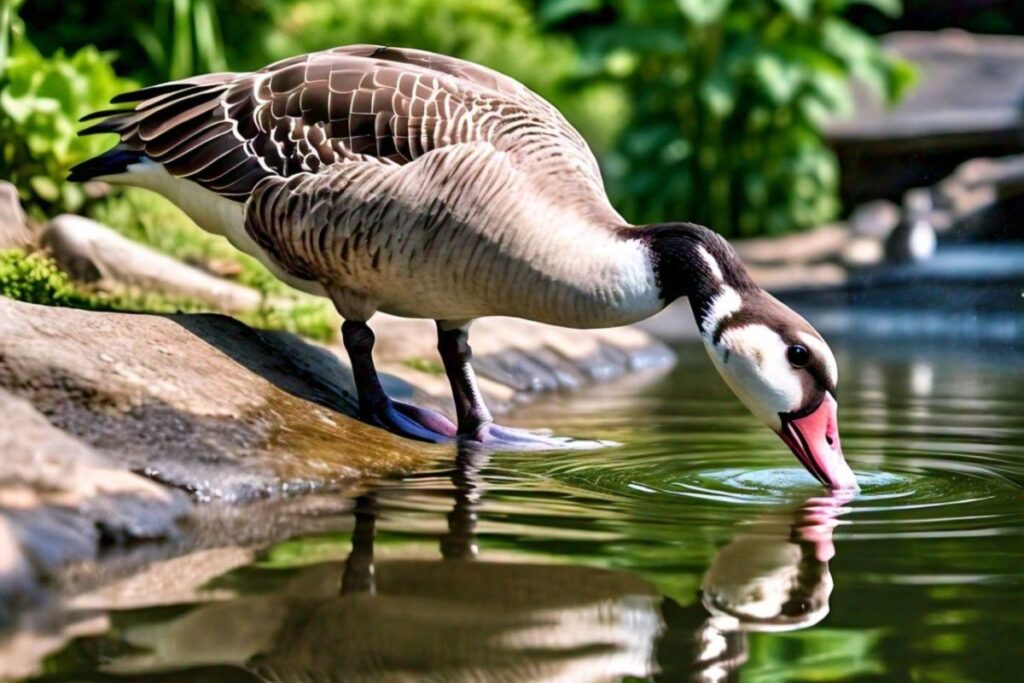
Exploring Frog Diets
Frogs play a crucial ecological role in various ecosystems, serving as both predators and prey. As predators, they help control insect populations, contributing to pest regulation and maintaining ecosystem balance. Additionally, frogs serve as prey for numerous species, including birds, snakes, and mammals, forming an essential part of the food web. Their presence indicates ecosystem health, as declines in frog populations can signal environmental disturbances such as pollution or habitat loss.
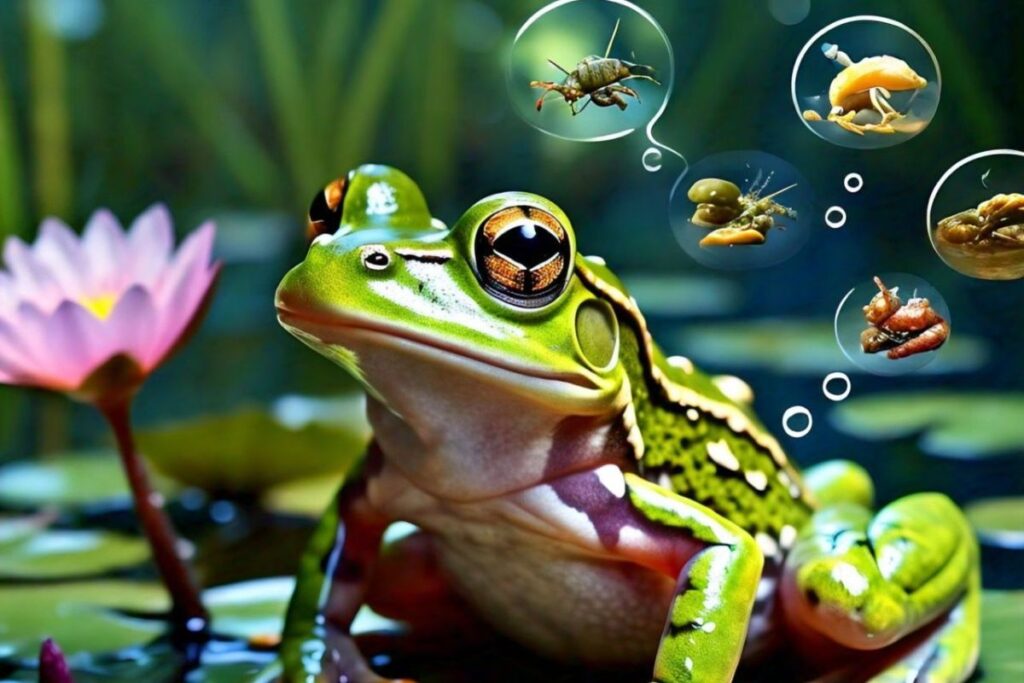
Typical Diets of Frogs in Various Habitats
The dietary preferences of frogs vary depending on their species and habitat. In general, most frogs are carnivorous, feeding on a diet primarily consisting of insects, spiders, and other small invertebrates. Aquatic frogs, such as bullfrogs and leopard frogs, hunt for prey in water bodies, consuming aquatic insects, tadpoles, and small fish. Tree frogs, on the other hand, primarily target insects found in trees and foliage. Certain frog species, like the African clawed frog, are opportunistic feeders, consuming a wide range of prey items, including smaller frogs and even small mammals.
Frog Distribution and Abundance
Frogs exhibit a wide distribution across various habitats worldwide, ranging from tropical rainforests to arid deserts. Distribution is impacted by variables like temperature, humidity, and the presence of suitable breeding grounds. In areas with abundant water bodies and vegetative cover, frog populations tend to be more abundant and diverse. However, frogs face numerous threats to their populations, including habitat destruction, pollution, climate change, and disease. Understanding the distribution and abundance of frogs is crucial for conservation efforts aimed at protecting these vital amphibian species and the ecosystems they inhabit.
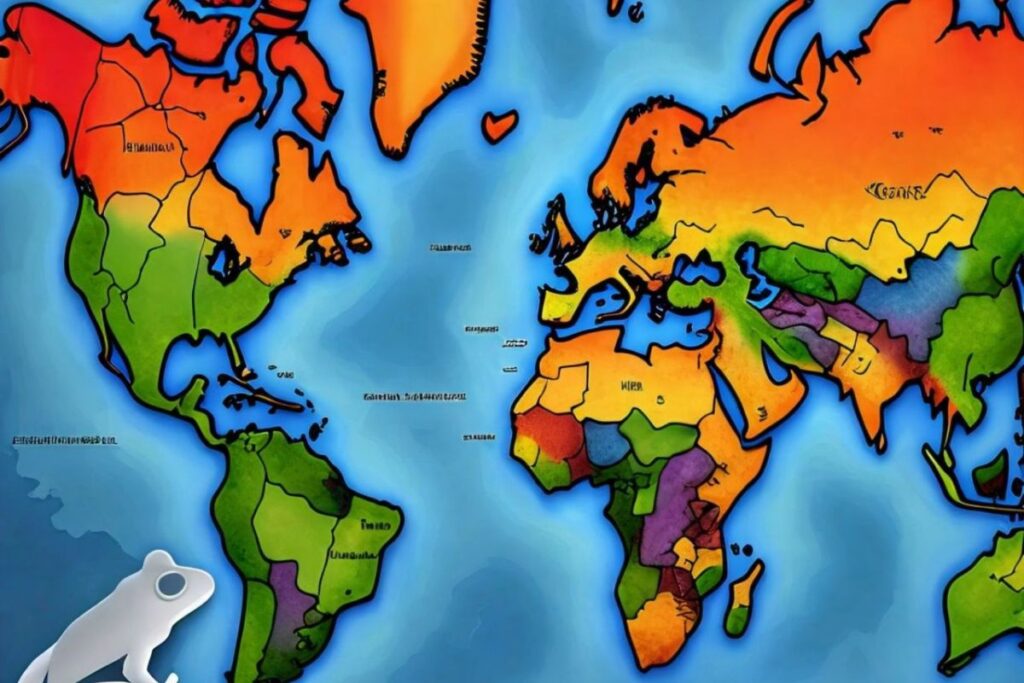
How geese prey on frog
Hunting Behavior of Geese
Geese, primarily herbivorous birds, are not typically known for preying on frogs as a significant part of their diet. However, there have been sporadic observations of geese exhibiting predatory behavior towards frogs, particularly in certain circumstances. Geese are opportunistic feeders and may resort to consuming frogs when other food sources are scarce or unavailable.
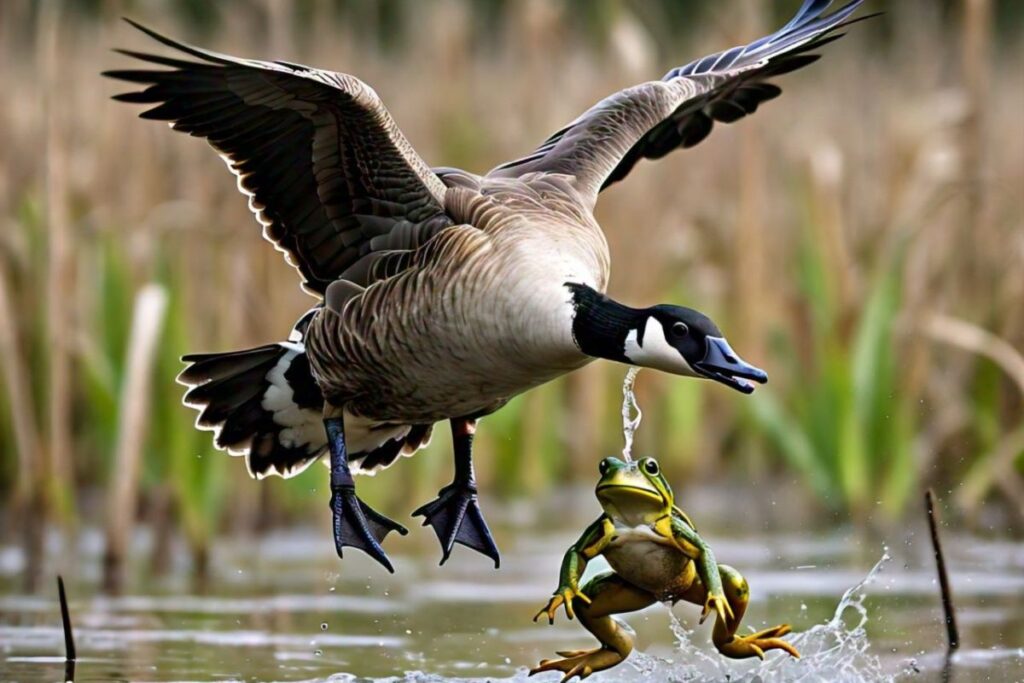
Can Geese and Ducks Mate?
Opportunistic Predation
In instances where frogs are abundant and easily accessible, geese may opportunistically prey on them. This behavior is more likely to occur in habitats where frogs coexist with geese, such as wetlands, marshes, and lakeshores. Geese may opportunistically snatch frogs that are near the water’s edge or within their foraging range.
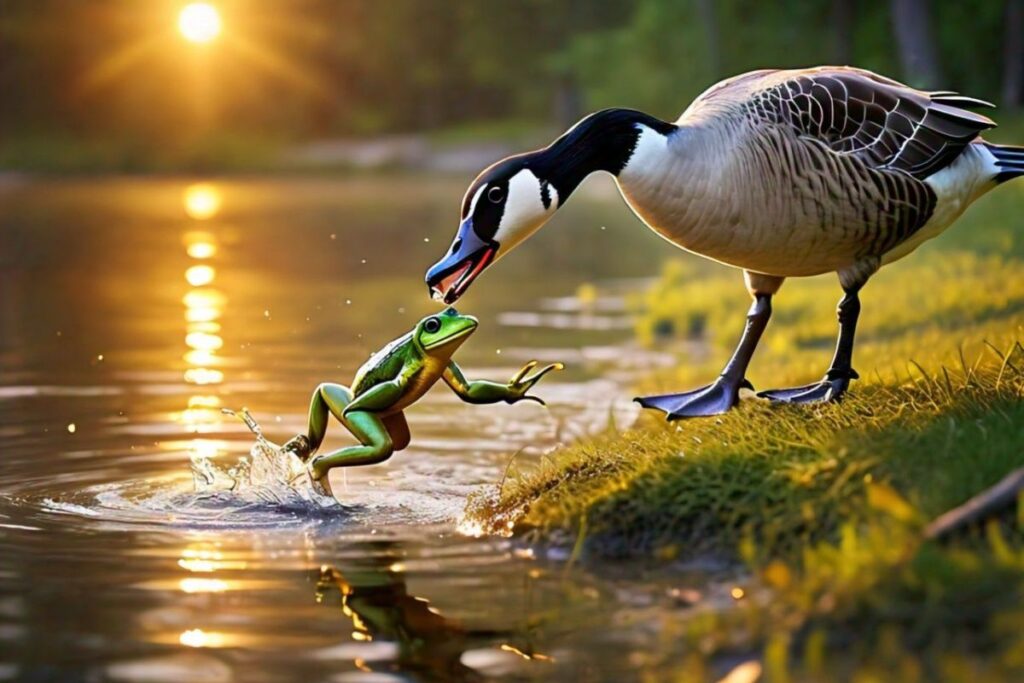
Limited Predation Impact
It’s important to note that predation of frogs by geese is generally infrequent and unlikely to have a significant impact on frog populations. Geese primarily rely on vegetation as their main food source, and instances of predation on frogs are relatively rare and opportunistic. The impact of goose predation on frog populations is likely minimal compared to other factors such as habitat loss, pollution, and climate change.
Heath benefit of eating frogs for geese
Geese can experience significant health benefits by incorporating frogs into their diet, and we’ll delve into some of these advantages.
Nutritional Content of Frogs
Frogs are a rich source of nutrients that could potentially benefit the health of geese. They contain high levels of protein, essential amino acids, vitamins, and minerals such as iron and zinc. Incorporating frogs into their diet could provide geese with a well-rounded nutritional profile, supporting their overall health and vitality.
Natural Prey in the Wild
In their natural habitats, geese may encounter frogs as part of their prey. Consuming frogs could offer geese a source of natural, unprocessed nutrition that aligns with their evolutionary diet. By consuming frogs, geese may access nutrients that are not readily available in their typical herbivorous diet, enhancing their nutritional intake and supporting their physiological functions.
Potential Impact on Behavior and Health
Introducing frogs into the diet of geese could potentially influence their behavior and health outcomes. While geese are primarily herbivorous, incorporating small amounts of animal protein from frogs could provide a supplemental source of energy and nutrients, particularly during periods of increased energy expenditure such as migration or breeding. However, it’s essential to consider the balance of their diet and ensure that frog consumption does not displace essential plant-based foods necessary for their health and well-being.
Considerations and Limitations
It’s important to approach the idea of feeding frogs to geese with caution and consideration for ethical and ecological implications. While frogs may offer nutritional benefits, their availability and suitability as a food source for geese may vary depending on factors such as habitat, species diversity, and conservation status. Additionally, overreliance on frogs as a dietary component could potentially disrupt natural ecosystems and contribute to declines in frog populations, ultimately affecting broader ecological balance.
Can Geese Eat Bananas?
Do Canadian Geese Eat Tadpoles?
Yes, Canadian geese do eat tadpoles. Geese, being waterfowl, have a varied diet consisting primarily of plants but also including small animals such as tadpoles. While tadpoles might not be their preferred choice, Canadian geese will consume them if other food sources are scarce. This behavior aligns with their adaptable nature and omnivorous feeding habits, where they opportunistically consume available food items to meet their nutritional needs.
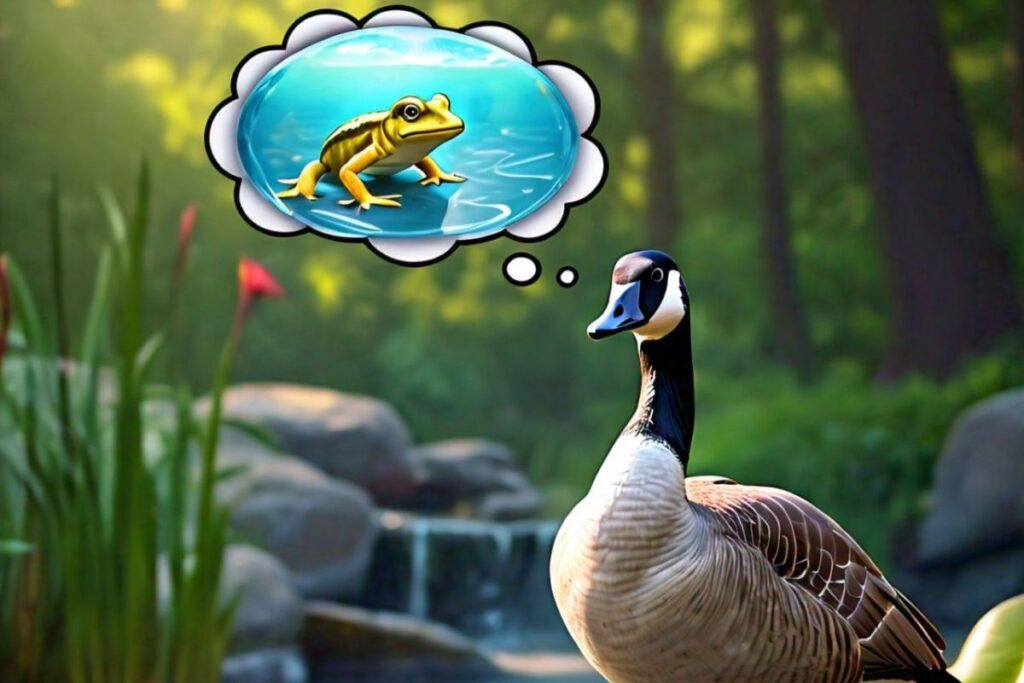
Do Birds Eat Baby Frogs?
Yes, birds do eat baby frogs. Birds, being opportunistic feeders, include baby frogs in their diet along with other small animals. Baby frogs, also known as tadpoles, are often preyed upon by various bird species, particularly those that inhabit wetland environments where tadpoles are abundant. This predation serves as a natural balance in ecosystems, where birds play a role in controlling populations of small aquatic creatures like baby frogs.
Do Birds Eat Poisonous Frogs?
Yes, some birds do eat poisonous frogs, although they have developed strategies to minimize the risk of poisoning. Certain bird species, such as some species of toucans, thrushes, and birds of prey like the laughing falcon, have been observed consuming toxic frogs without apparent ill effects. These birds have adaptations such as specialized enzymes or behavioral mechanisms that help them tolerate or neutralize the toxins found in the frogs they consume.
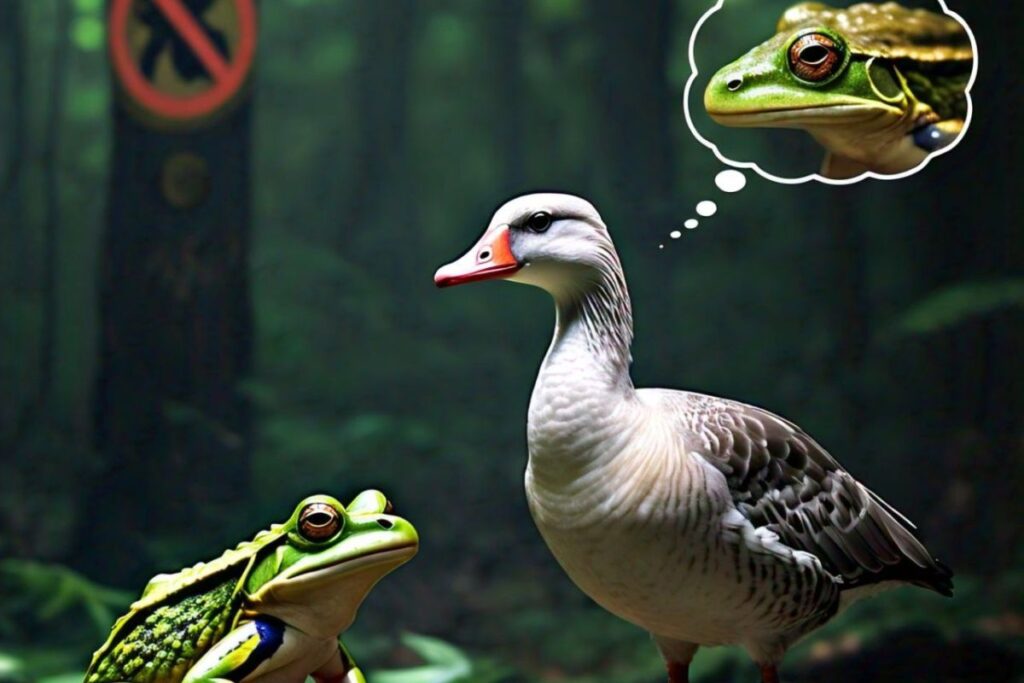
Additionally, they may selectively target specific parts of the frog that contain lower concentrations of toxins, reducing their exposure to harmful compounds. However, it’s important to note that not all bird species can tolerate the toxins found in poisonous frogs, and consumption of these frogs can still pose risks to some birds.
Do all geese Species eat frogs?
No, not all species of geese eat frogs as a regular part of their diet. While some species of geese may occasionally consume small invertebrates, including frogs, as part of their diet, the majority of geese are primarily herbivorous, feeding on vegetation such as grasses, grains, and aquatic plants. The consumption of frogs by geese varies depending on factors such as habitat, availability of food sources, and individual dietary preferences. Therefore, while some geese species may include frogs in their diet occasionally, it is not a universal behavior across all species of geese.
What Species of frog geese eat
Geese primarily feed on vegetation and are not known to actively seek out frogs as a significant part of their diet. However, in instances where geese do consume frogs, they may target various species depending on factors such as habitat and availability. If geese do consume frogs, they are likely to target smaller species that inhabit their foraging areas, such as small frogs found near water bodies or in grassy areas. However, it’s important to note that the consumption of frogs by geese is relatively rare compared to their herbivorous feeding habits, and they are not specialized predators of frogs.
FAQ’S
What other animals do geese eat besides frogs?
They may occasionally consume small invertebrates as part of their diet. Common invertebrate prey for geese include insects like beetles, caterpillars, and grasshoppers, as well as other small creatures such as snails and earthworms. Additionally, geese may opportunistically feed on aquatic plants, seeds, and crops found in their habitat. While geese are not specialized predators of animals, they may incorporate small invertebrates into their diet when available, but their primary focus is on plant-based food sources.
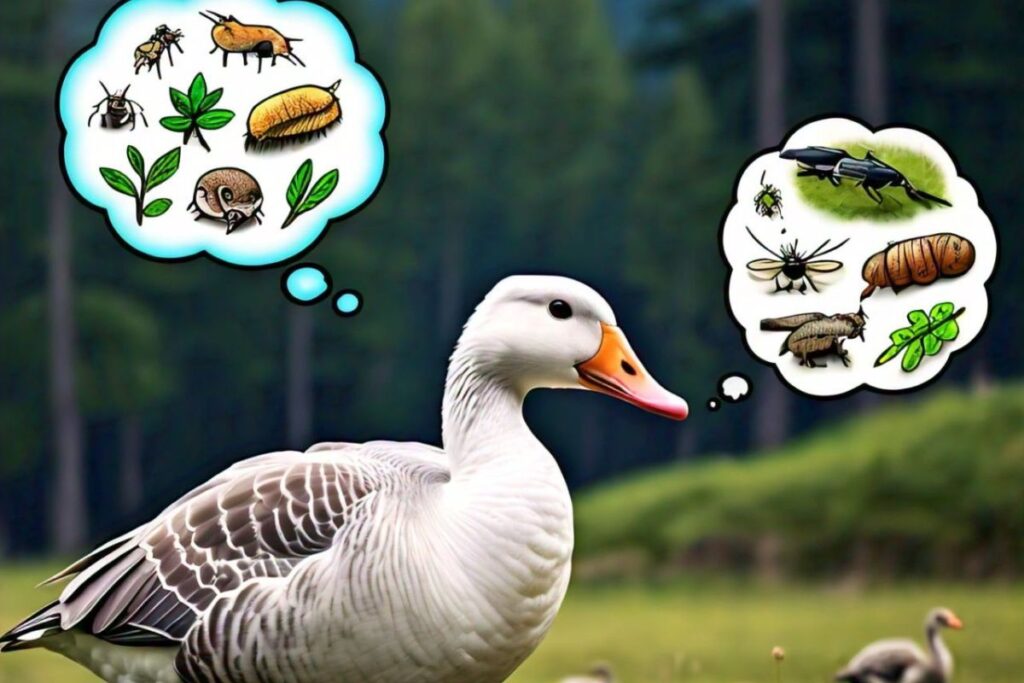
Do geese eat amphibians?
They may occasionally consume small invertebrates, including amphibians like frogs and tadpoles, it is not a common or regular behavior for most geese species. Their feeding habits primarily revolve around grazing on vegetation such as grasses, grains, and aquatic plants. Therefore, while geese may opportunistically feed on amphibians if they encounter them, they are not specialized predators of amphibians.

